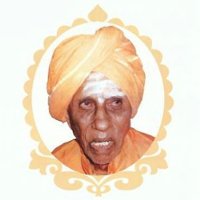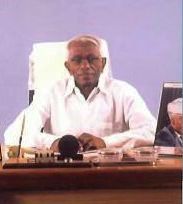History about Bhalki
Bhalki, situated on Nanded-Humnabad Highway, is the taluka Head Quarter of Bidar District in the North-East Karnataka. Geographically, it is situated at the heart of Bidar District. Other taluka places, like Bidar, Humnabad, Basavakalyan and Aurad, lie at a distance of 38-40 Kms from it. It is a place with historical significance. The first recorded reference to Bhalki appears in the Copper Plate inscription of Jamalagaon (now in Maharastra), inscribed during the rule of Vijayaditya – V, of Chalukyas of Badami, tracing back to 696 AD. Here, Bhalki was mentioned as Bhalunke Desh. Another inscription dated 1100 AD mentions Bhalki as the capital city of Kumar Hemmadi, who was subordinate ruler to the Chalukyas of Kalyan. It is to note that a chieftain named Ramachandra Jadhav built a fort here. Later, it was the head quarter of a Paiga Taluka of Khursheed Jah under the Nizam dynasty.
During the 12th Century A.D., known as the age of Lord Basaveshwara, Bhalki was called as the last gate of Kalyan, the seat of Sharanas. Hariharar has referred in his Ragale to a Sharana called Kumbar Gundayya who was the resident of Bhalki. He described him as a Sharana who danced and made Shiva also dance with him. Even today the pot-makers’ area of Bhalki has a Shiva temple locally known as Kumbheshwara.
This place which once enjoyed its own religious and political identity passed into oblivion for several centuries, particularly during the reign of Asifjahis of Hyderabad. This part of modern Karnataka was highly dominated by Urdu and Marathi Languages. Kannada, which has enjoyed a wide popularity during the age of Lord Basaveshwara, dwindled into a simple family language of the a few and relegated to the minority status and was on the verge of extinct.
At this juncture, His Holiness Shri Shri Channabasava Pattadevaru of the local Hiremath Samsthan, after his education and spiritual training at Shivayoga Mandira of Shri. Hanagal Kumar Swamiji returned to Bhalki and became the Peethadipati in 1924. Late Shri Raikashirai Deshmukh and late Shri Shivalingappa Khandre, the then prominent social workers of Bhalki, responsible for bringing Swamiji from Kamalnagar to Bhalki, felt a great relief. Pattadevaru began to propagate the precepts of Lord Basaveshwara and the other Sharanas.
 Poojya Shri Channabasava Pattadevaru was directed by his Guru to revive Kannada, the medium of discussion in Anubhavamantapa - the Parliament of the spiritually enlightened. Poojya Channabasava Pattadevaru rolled up his sleeves to materialize the directions of his Guru. This hallowed personality of Bhalki initiated his mission by starting a Kannada primary school at Morgi village. After some years due to administrative difficulties the school was shifted to Sangam village on the banks of the Manjra river. Although the school enjoyed a beautiful panorama, it was often troubled by floods and therefore was shifted to Kamanalagar.
His Holiness Poojya Shri Channabasava Pattaddevaru was supported in his mission by Shri R.V. Bidappa and Shri Bheemanna Khandre.
Poojya Shri Channabasava Pattadevaru was directed by his Guru to revive Kannada, the medium of discussion in Anubhavamantapa - the Parliament of the spiritually enlightened. Poojya Channabasava Pattadevaru rolled up his sleeves to materialize the directions of his Guru. This hallowed personality of Bhalki initiated his mission by starting a Kannada primary school at Morgi village. After some years due to administrative difficulties the school was shifted to Sangam village on the banks of the Manjra river. Although the school enjoyed a beautiful panorama, it was often troubled by floods and therefore was shifted to Kamanalagar.
His Holiness Poojya Shri Channabasava Pattaddevaru was supported in his mission by Shri R.V. Bidappa and Shri Bheemanna Khandre.
 The Pattaddevaru founded Shanthi Vardhak Education Society at Kamalanagar and got it registered in the year 1963 with Shri Bheemanna Khandre as its Founder President. Although Poojya Pattadevaru wanted to get himself detached from the education society, His Holiness agreed, on the request of Shri Bheemanna Khandre, to continue as its Sanchalaka.
The Pattaddevaru founded Shanthi Vardhak Education Society at Kamalanagar and got it registered in the year 1963 with Shri Bheemanna Khandre as its Founder President. Although Poojya Pattadevaru wanted to get himself detached from the education society, His Holiness agreed, on the request of Shri Bheemanna Khandre, to continue as its Sanchalaka.
At present Shri Er. Ishwar Khandre is the President and Shri Basavanappa Hosale is the Secretary of S.V.E. Society, Bhalki. Today, a large number of students are taking quality & technical education in the different institutions run by the Management.